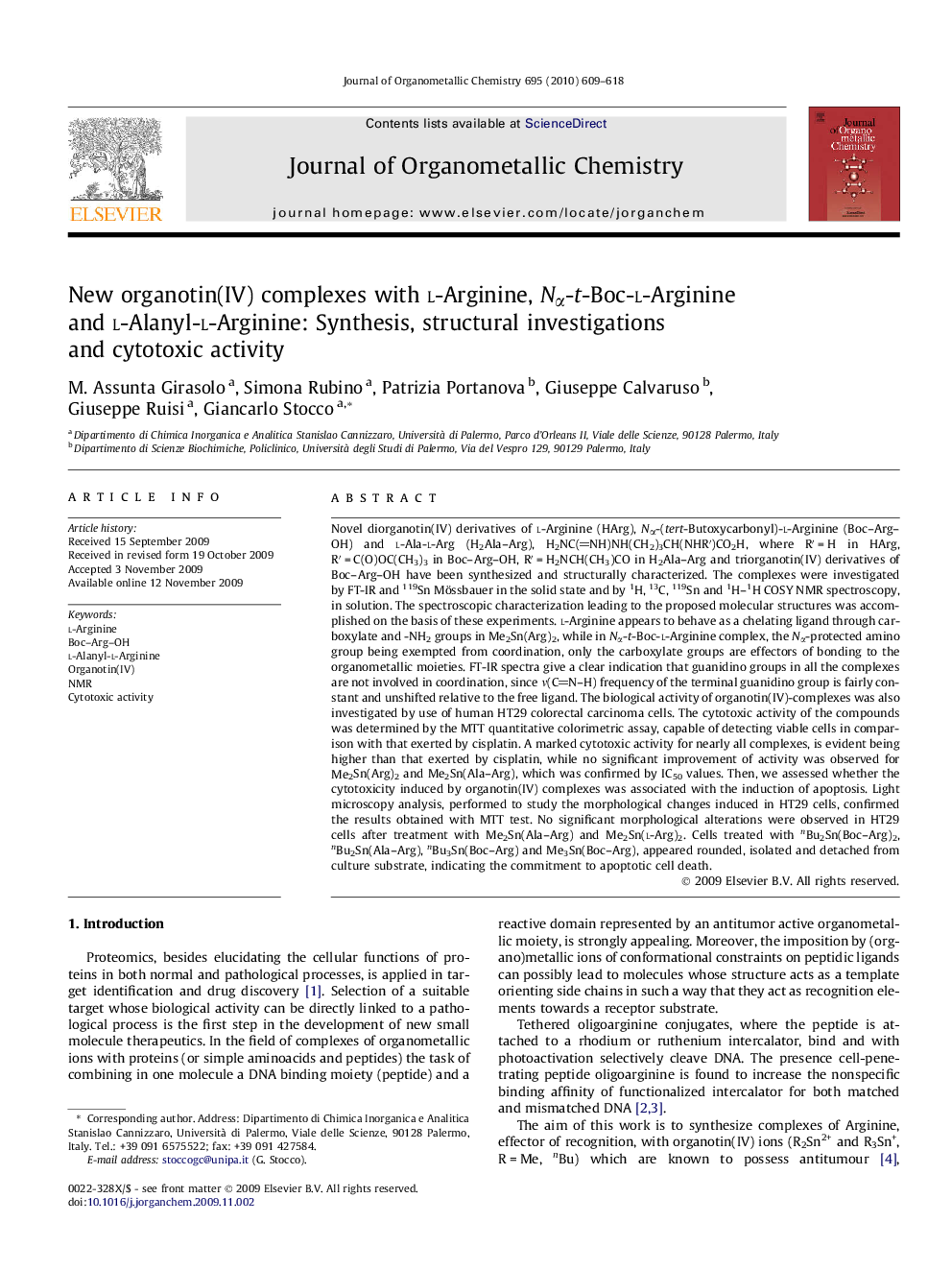| Article ID | Journal | Published Year | Pages | File Type |
|---|---|---|---|---|
| 1325977 | Journal of Organometallic Chemistry | 2010 | 10 Pages |
Novel diorganotin(IV) derivatives of l-Arginine (HArg), Nα-(tert-Butoxycarbonyl)-l-Arginine (Boc–Arg–OH) and l-Ala-l-Arg (H2Ala–Arg), H2NC(NH)NH(CH2)3CH(NHR′)CO2H, where R′ = H in HArg, R′ = C(O)OC(CH3)3 in Boc–Arg–OH, R′ = H2NCH(CH3)CO in H2Ala–Arg and triorganotin(IV) derivatives of Boc–Arg–OH have been synthesized and structurally characterized. The complexes were investigated by FT-IR and 119Sn Mössbauer in the solid state and by 1H, 13C, 119Sn and 1H–1H COSY NMR spectroscopy, in solution. The spectroscopic characterization leading to the proposed molecular structures was accomplished on the basis of these experiments. l-Arginine appears to behave as a chelating ligand through carboxylate and -NH2 groups in Me2Sn(Arg)2, while in Nα-t-Boc-l-Arginine complex, the Nα-protected amino group being exempted from coordination, only the carboxylate groups are effectors of bonding to the organometallic moieties. FT-IR spectra give a clear indication that guanidino groups in all the complexes are not involved in coordination, since ν(CN–H) frequency of the terminal guanidino group is fairly constant and unshifted relative to the free ligand. The biological activity of organotin(IV)-complexes was also investigated by use of human HT29 colorectal carcinoma cells. The cytotoxic activity of the compounds was determined by the MTT quantitative colorimetric assay, capable of detecting viable cells in comparison with that exerted by cisplatin. A marked cytotoxic activity for nearly all complexes, is evident being higher than that exerted by cisplatin, while no significant improvement of activity was observed for Me2Sn(Arg)2 and Me2Sn(Ala–Arg), which was confirmed by IC50 values. Then, we assessed whether the cytotoxicity induced by organotin(IV) complexes was associated with the induction of apoptosis. Light microscopy analysis, performed to study the morphological changes induced in HT29 cells, confirmed the results obtained with MTT test. No significant morphological alterations were observed in HT29 cells after treatment with Me2Sn(Ala–Arg) and Me2Sn(l-Arg)2. Cells treated with nBu2Sn(Boc–Arg)2, nBu2Sn(Ala–Arg), nBu3Sn(Boc–Arg) and Me3Sn(Boc–Arg), appeared rounded, isolated and detached from culture substrate, indicating the commitment to apoptotic cell death.
Graphical abstractA wide array of organotin(IV) derivatives of l-Arg, Boc–Arg–OH and l-Ala-l-Arg was obtained by direct reaction of organotins with aminoacids and dipeptide. The structural characterization was accomplished by use of FT-IR, Mössbauer in the solid state and by 1H, 13C, 119Sn and 1H–1H COSY NMR spectroscopy. In vitro cytotoxic activities against HT29 cells are also reported.Figure optionsDownload full-size imageDownload as PowerPoint slide
